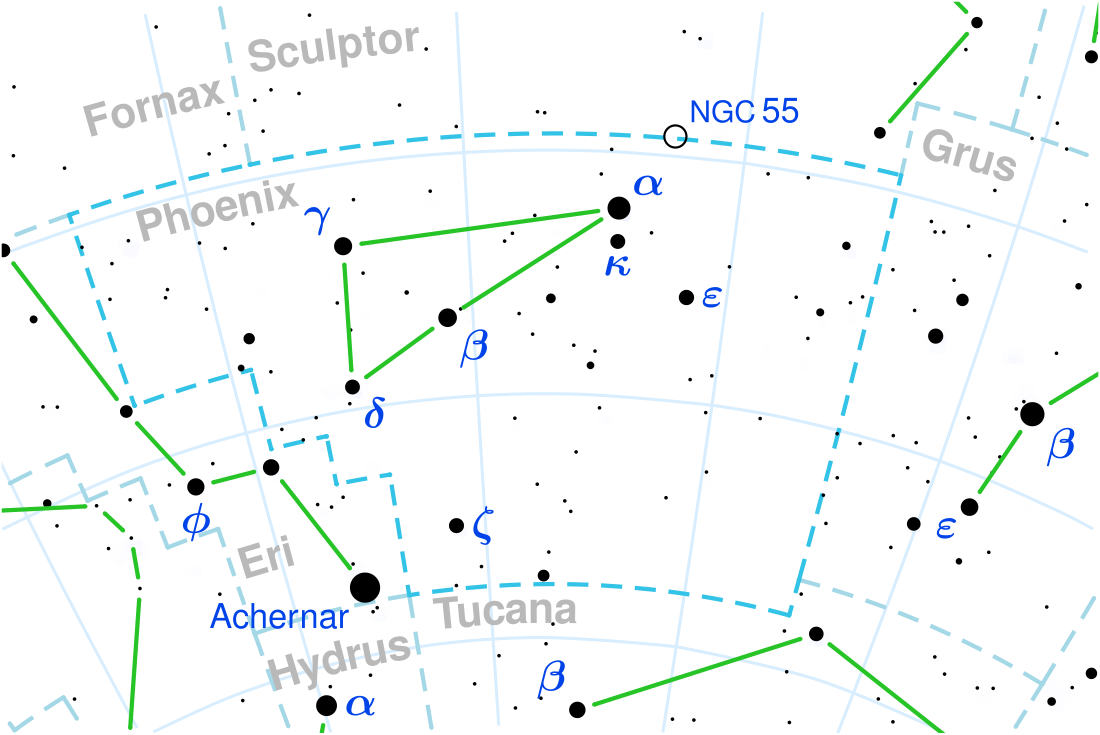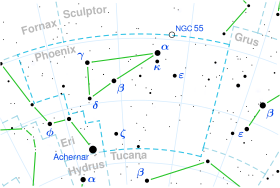Top Qs
Timeline
Chat
Perspective
Nu Phoenicis
Star in the constellation Phoenix From Wikipedia, the free encyclopedia
Remove ads
Nu Phoenicis is a star in the southern constellation of Phoenix. It is visible to the naked eye with an apparent visual magnitude of 4.95.[2] This is a solar analogue, meaning its observed properties appear similar to the Sun, although it is somewhat more massive. At a distance of around 49.5 light years,[1] this star is located relatively near the Sun.
Based on observations of excess infrared radiation from this star, it may possess a dust ring that extends outward several AU from an inner edge starting at 10 AU.[7]
Remove ads
Properties
Summarize
Perspective
This is an F-type main-sequence star with a spectral type of F9V Fe+0.4,[3] indicating it is similar to the Sun but somewhat hotter and more luminous. The notation 'Fe+0.4' indicates strong iron absorption lines; the star is indeed metal-rich, with an iron abundance 45% greater than the Sun's. Nu Phoenicis has 1.15 times the solar mass and a radius of 1.26 times the solar radius. It is shining with 2.00 times the solar luminosity at an effective temperature of 6,116 K.[5]
Nu Phoenicis has a projected rotational velocity of 3.7 km/s,[4] and a low chromospheric activity index (log R′HK = −4.95).[8] These values indicate that the star is not particularly young and has an age of a few billion years; empirical calibrations estimate from the rotational velocity an age of 2.4 billion years, and from the activity index an age of 5.67 billion years.[8] Similarly, stellar evolution models estimate an age between 1 and 6 billion years, with a more probable value of 4.2 billion years.[9]
Nu Phoenicis has no known companions, and is considered to be a single star.[4] As a bright star similar to the Sun, it has been targeted in a number of studies searching for planets with the radial velocity method, but no detection has been made. High-precision observations with the HARPS spectrograph show that the radial velocity of the star has no significant variability, and is constant to 2.67 m/s, a value similar to the estimated jitter level of 2.48 m/s.[10] The star has also been included in the observations of the Anglo-Australian Planet Search, which did not find Jupiter-analogs with periods up to 6,000 days.[11]
Nu Phoenicis emits a significant amount of infrared excess, in comparison to the expected emission from the star's photosphere, indicating it has a circumstellar debris disk that is warmed by the star and emits thermal radiation.[7] The excess has been detected in long wavelengths, between 30[7] and 100 μm,[12] indicating relatively cold dust many astronomical units away from the star. Modeling the emission as a black body, the disk has an estimated temperature of 96 K and a radius of 12 AU, contributing to 0.00024% of the system's luminosity.[12]
Remove ads
See also
References
External links
Wikiwand - on
Seamless Wikipedia browsing. On steroids.
Remove ads

